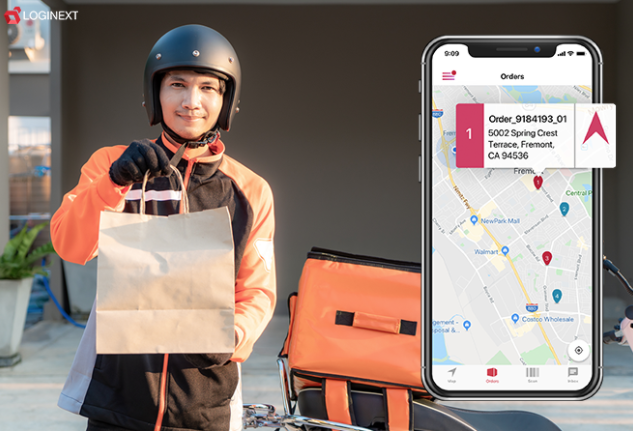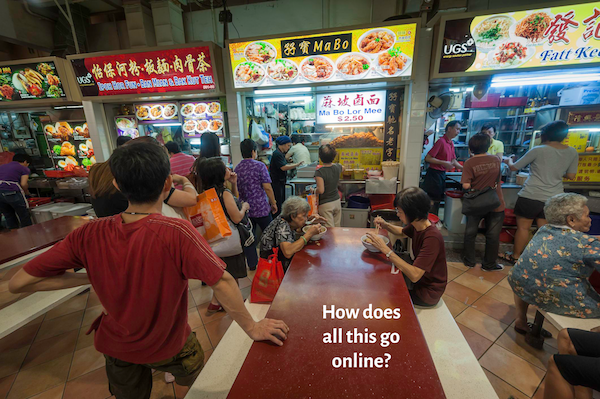Are you a Fast Casual chain going online? Here are some tips from technology experts
Online food delivery has been on an upward trend in the last few years and with the pandemic striking in 2020, the trend has skyrocketed. In a rather grim situation for people and businesses globally, some industries have got a big push and online delivery happens to be one of them. Logistics and supply chains across the globe are being reworked and this year seems to be the one of taking in everything and preparing for 2021.
If you’re in the business of QSR in SE Asia, some of the experts in the field gathered to share their thoughts on the times to come at the QSR Media Asia event. If one zooms out a little, this is a question of figuring out the right technology infusion for a restaurant or QSR chain. This is no longer a world where only in-dine experience is going to matter, there is a whole lot more that a QSR chain will have to think of.
On this panel were third party aggregators like Grab, foodpanda and Deliveroo, senior representatives from a QSR chain, an analyst overlooking the space and technology providers like LogiNext which help QSR chains own their deliveries.

Major boom in food delivery
All third party aggregators have seen a major boom in terms of the number of restaurants that want to come onboard and start deliveries. “In general, covid has accelerated the delivery business by a few years. The entire industry has transformed. Many restaurants have been forced to transform. We have had to increase billing frequency, there’s an explosion in the number of restaurants wanting to sign up and several other factors that have come up,” says Luc Andreani, MD, Singapore, foodpanda.
Grab, a super-app, headquartered in Singapore started as a ride-hailing app in 2012 and over the years, expanded into several domains like food, transport, hotels, payments and more. When the pandemic struck, a lot of the industries came to a halt but food delivery was picking up and Grab focused on getting their driver-partners on the food delivery platforms. “We’ve scaled up really fast and now do deliveries across the island. We’re also working with brands to modify their go-to-market strategy and working with restaurants as partners,” says Saad Ahmed from Grab. For instance, Grab helps brands with addressing questions like what items to begin deliveries with, what should be an appropriate opening time and such. Deliveroo is another online food delivery company which is based in UK with operations in Singapore and several other countries.
Another approach for QSR chains is to own their deliveries with the help from technology companies like LogiNext. Headquartered in US with offices in India and Singapore, LogiNext provides focuses on traditional businesses and offer them technology to own and optimise their deliveries. “We provide a white label platform to mid scale and large scale restaurant chains. We have managed to bring multiple chains online and do their own deliveries; especially in the last six months. That has been a big change! Deliveries are contributing almost 30-35% of their revenues,” says Dhruvil Sanghvi, CEO at LogiNext.
Tips and trends for QSR chains
There are several areas to be pondered over. Deepika Chandrasekar from Euromonitor International says, “Trends like Click and collect, mobile ordering, home deliveries, cloud kitchens, etc. are becoming areas for a QSR chain to consider.” Dark kitchens are called by several names like ghost kitchens or cloud kitchens; these are basically kitchens which sell meals exclusively through delivery. And this is a great diversification strategy for any brand. It helps strengthen operational efficiency and affordability is especially a thing to consider in these recessionary times. “To keep the affordability factor in mind, we’ve started Hawker centers on our app. These are basically clusters of street food brought online in a similar format. We have 18 such centers in Singapore alone,” shares Saad.

Hawker Centre in Singapore (image credit: fotoVoyager/Getty Images)
For a brand, there are several factors to consider in this new ever-evolving situation. Douglas DeBoer, chairman of Modern Brands Holdings shares some-
a) Packaging- it critical to figure out the economical and eco-friendly options to deliver food
b) Menu- certain items are not feasible to be delivered, so it is important to relook the menu and modify according to the situation c) Tricks- to increase demand or generate more interest on the online channel- certain items can be made available only on delivery.
Brands are also getting into meal kits, frozen foods, DIY bubble kits! “Brands need to assess their fit, what suits them best. Our research shows some brands haven’t taken off too well when they have gone the cloud kitchen route. It depends on individual brands. We’re definitely looking at optimization for deliveries, going forward. Delivery is very crucial for you to stay relevant. We’re expecting more delivery collaborations for brands. In India, ITC collaborated with Dominoes to get their deliveries out. There will be more synergies. Hygiene and sanitation has to be more inbuilt. These are the big trends for brands to ride on,” says Deepika.
How to decide
At the end of the day, it’ll come down to the brand on how it wants to position and what kind of approach it wants to adopt. One big question when it comes to deliveries is the margin. The crazy promotion days are now over. Consumers are now used to online deliveries and it’ll now come down to figuring out the economics. “The age of promotions is behind us. That was 2017-19. The world has changed since. Things will have to be a lot more realistic now. Partnerships will have to be forged to find a middle ground,” says Luc from foodpanda.
If you’re thinking of adopting technology, LogiNext CEO shares some points of consideration:
– Many big scale chains have always focused on in-dine experience but often neglect the delivery experience. Delivery experience is not just reaching the food to the customer but the entire process of taking feedback from the customer, getting them back to the brand website and owning the entire piece.
– A lot of customers don’t know how to calculate an accurate ETA. How to do this properly? How to quicken the entire process? There are several tools for engaging the customer via email, SMS, push-notification, etc. Third-party apps are great as well but the margins can sometimes be detrimental for some of the QSR chains.
– There are conversations on not being able to collect and own information data so that they can engage better and have more repeated customers. Things like- what time of the day is a person likely to order, what zip codes is the order more likely to come from? And many such data points.
(Want to know more? Get in touch with LogiNext)
Technology is playing a large part in shaping the next version of restaurants and QSRs and for any brand, it is of utmost importance to integrate this smoothly in their day to day operations. 2020 will give a lot of clarity with the early movers experimenting with technology and most likely, by the end of the year, the world will have a fresh outlook on how the future of QSR chains would like.
136







@LogiNext